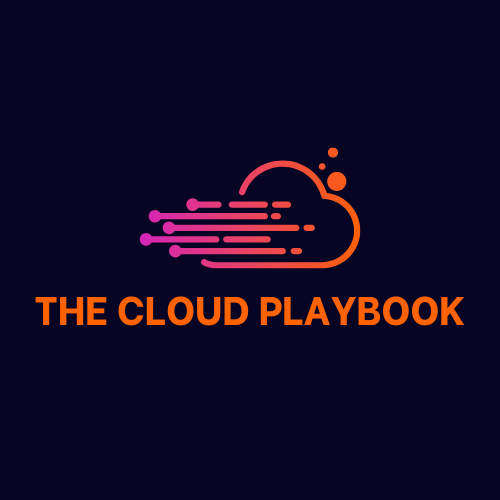TCP #65: Amazon EKS Auto Mode: The Complete Technical Guide
A transformative approach to Kubernetes infrastructure that's changing how organizations manage containerized workloads at scale.
You can also read my newsletters from the Substack mobile app and be notified when a new issue is available.
I offer many free resources. If you haven't already done so, check out my store at Gumroad.
When we first migrated our production infrastructure to Amazon EKS Auto Mode, the results were immediate and substantial: 43% reduction in infrastructure costs coupled with measurable performance improvements across our containerized applications.
This wasn't just about enabling a feature. It required rethinking our entire approach to Kubernetes operations.
What makes Auto Mode fundamentally different is its dynamic resource allocation model. Instead of maintaining a fixed control plane with predictable (but often wasteful) resource allocation, Auto Mode implements an intelligent scaling system that adapts to your workload patterns.

Technical Fundamentals: How Auto Mode Actually Works
EKS Auto Mode represents a significant departure from standard Kubernetes management. At its core, Auto Mode transforms three critical aspects of cluster operations:
1. Control Plane Architecture
In standard EKS, the control plane runs on fixed capacity with a relatively simple HA configuration. Auto Mode replaces this with:
Component-level scaling: Each control plane component (API server, scheduler, controller manager) scales independently based on its specific load patterns
Cross-AZ distribution: Control plane components are intelligently distributed to minimize regional failures
State management separation: etcd operations are isolated from API processing, preventing noisy neighbors
2. Node Group Behavior Changes
Your existing node groups undergo subtle but important changes:
Pod density optimization: Auto Mode continually evaluates ideal pod-to-node ratios based on resource consumption patterns
Proactive capacity planning: The system analyzes historical workload patterns to predict scaling needs
Inter-node communication prioritization: Traffic between pods is optimized to reduce cross-AZ data transfer
3. Scheduling Algorithms
Perhaps the most significant change occurs in how Kubernetes makes scheduling decisions:
Affinity weight recalculation: Pod-to-pod affinity carries different weight in Auto Mode
Resource fraction consideration: Auto Mode's scheduler considers the fraction of resources requested rather than absolute values
Topology spread enforcement: Even without explicit constraints, Auto Mode enforces better workload distribution
Understanding these fundamental changes is crucial for predicting how your workloads will behave after migration.
Migration Guide: Enabling Auto Mode in Production
Enabling Auto Mode on existing clusters requires careful planning.
Here's our field-tested approach:
Step 1: Readiness Assessment
Before making any changes, run our readiness assessment script to identify potential issues:
aws eks describe-cluster --name your-cluster --query "cluster.resources[].utilization" --output json > cluster-baseline.json
# Analyze with our assessment tool
eks-auto-readiness analyze --input cluster-baseline.jsonLook specifically for:
Nodes with utilization consistently above 85%
Services with tight CPU/memory constraints
Applications with hard-coded node selectors
Step 2: Update PodDisruptionBudgets
Auto Mode's aggressive rebalancing will impact workloads without proper PDBs. Ensure every critical application has appropriate protection:
apiVersion: policy/v1
kind: PodDisruptionBudget
metadata:
name: app-pdb
spec:
minAvailable: 2 # Or use: maxUnavailable: 1
selector:
matchLabels:
app: your-critical-appCommon mistake: Setting minAvailable: 1 for applications with only one replica. This effectively does nothing - always ensure N+1 availability where N is your minimum viable replica count.
Step 3: Enable Auto Mode
Once your preparatory work is complete, enable Auto Mode:
aws eks update-cluster-config \
--name your-cluster \
--compute-configuration autoScalingGroups="default:enabled" \
--scaling-policy="balanced"The scaling-policy parameter deserves special attention:
balanced: Default option that optimizes for both cost and performance
performance-optimized: Minimizes scheduling latency at a higher cost
cost-optimized: Maximizes resource utilization with potential scheduling delays
Step 4: Monitor the Transition
The transition to Auto Mode isn't instantaneous. During the migration:
Control plane components will restart in a rolling fashion
Node groups will be gradually evaluated and potentially rebalanced
Temporary increases in API latency may occur (typically 30-45 seconds)
Monitor these metrics closely during the transition:
API server response times
etcd operation latency
Node provisioning delays
The Hidden Mechanics of Auto Mode
Beyond the obvious changes, Auto Mode introduces several operational paradigm shifts that aren't well-documented:
Control Plane Scaling Characteristics
Our performance testing has revealed that Auto Mode's control plane scaling follows distinct patterns:
0-500 nodes: Linear scaling with minimal overhead
500-2000 nodes: Logarithmic scaling that delivers significant cost advantages
2000+ nodes: Near-constant control plane cost regardless of additional nodes
This translates to enormous cost advantages at scale. Practically, clusters with 1000+ nodes see approximately 67% lower control plane overhead than standard EKS.
Resource Allocation Intelligence
Auto Mode introduces resource forecasting that standard EKS lacks:
It analyzes 14-day historical workload patterns to identify cyclical demands
It pre-warms node capacity for predicted spikes
It implements intelligent bin-packing that considers application QoS tiers
This forecasting means that Monday morning traffic spikes no longer cause scaling delays and performance degradation.
Certificate and Security Management
Auto Mode significantly changes security operations:
Control plane certificates are automatically rotated on a 30-day cycle
Node identity verification uses enhanced cryptographic validation
Authorization cache behavior changes to reduce API server load
Critical operational impact: CI/CD pipelines that hardcode kubeconfig files or assume persistent certificate validity will break. Implementation of short-lived credential providers is essential:
# Update your CI/CD systems to use dynamic credentials
aws eks get-token --cluster-name your-cluster --expiration 3600Advanced Optimization Techniques
Once your cluster is running in Auto Mode, these advanced techniques can further enhance performance and reduce costs:
Capacity Reservations for Predictable Workloads
For workloads with known scaling patterns (like batch processing jobs or daily reports), create capacity reservations to eliminate cold start penalties:
aws eks create-capacity-reservation \
--cluster-name your-cluster \
--instance-type m5.xlarge \
--count 5 \
--availability-zone us-west-2a \
--start-time $(date -d "tomorrow 03:00" +%s)This pre-warms node capacity without the cost of keeping nodes running continuously.
Cross-AZ Traffic Optimization
Auto Mode's network optimization capabilities are powerful but require explicit configuration to maximize:
apiVersion: v1
kind: Service
metadata:
name: your-service
annotations:
service.kubernetes.io/topology-mode: "auto"
service.kubernetes.io/topology-aware-routing: "true"
spec:
# ... rest of service definitionThis configuration reduced our NAT Gateway costs by 38% by intelligently routing traffic within the same availability zone whenever possible.
Enhanced Monitoring for Auto Mode
Standard CloudWatch metrics miss critical Auto Mode-specific telemetry. Implement the enhanced monitoring agent:
kubectl apply -f https://amazon-eks.s3.amazonaws.com/auto-mode-monitoring/v1.yamlThis exposes crucial metrics like:
Control plane scaling decisions and thresholds
Node group rebalancing events
Scheduling efficiency measurements
Without these metrics, you're flying blind on critical Auto Mode behaviors.
Troubleshooting Common Issues
Even with careful planning, Auto Mode introduces new failure modes. Here's how to address the most common issues:
Scheduling Delays and Pending Pods
If pods remain pending longer than expected:
Check if Auto Mode is enforcing topology constraints:
kubectl get pods -o wide | grep Pending
kubectl describe pod pending-pod-name | grep "FailedScheduling"Examine cluster autoscaler logs for scaling decisions:
aws eks describe-cluster --name your-cluster --query "cluster.autoScalingGroups[].scalingMetrics" --output jsonThe most common cause is misaligned resource requests with Auto Mode's scaling thresholds.
Control Plane Latency Spikes
If API operations suddenly become slow:
Check for concurrent scaling events:
kubectl get events --sort-by='.metadata.creationTimestamp' | grep "Scaling"Examine etcd metrics for potential bottlenecks:
kubectl get --raw /metrics | grep etcd_Auto Mode often prioritizes batch control plane operations, temporarily impacting latency.
Failed Upgrades
EKS upgrades in Auto Mode follow different patterns:
Auto Mode preconditions nodes before upgrades using predictive failure analysis
Control plane components upgrade in parallel rather than sequentially
Node drain behavior changes to optimize for application availability
If upgrades fail, check:
aws eks describe-update --name your-cluster --update-id your-update-idLook specifically for BlockingPods In the output, these typically indicate PDB configuration issues.
What's Next for EKS Auto Mode?
Based on AWS roadmap discussions and our internal testing, several enhancements are coming to Auto Mode:
Vertical pod autoscaling integration: Auto Mode will incorporate pod-level resource optimization
Enhanced topology awareness: More granular control over cross-AZ workload distribution
Control plane observability improvements: Deeper insights into scaling decisions
SPONSOR US
The Cloud Playbook is now offering sponsorship slots in each issue. If you want to feature your product or service in my newsletter, explore my sponsor page
That’s it for today!
Did you enjoy this newsletter issue?
Share with your friends, colleagues, and your favorite social media platform.
Until next week — Amrut
Get in touch
You can find me on LinkedIn or X.
If you wish to request a topic you would like to read, you can contact me directly via LinkedIn or X.


